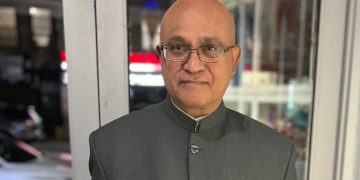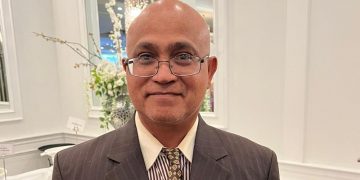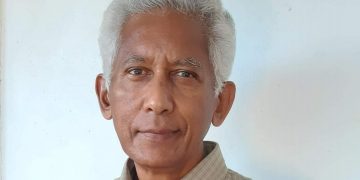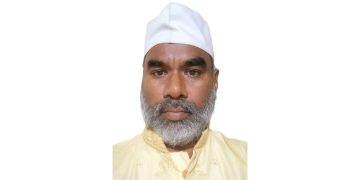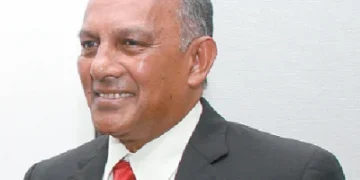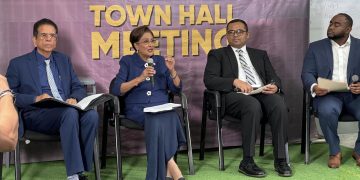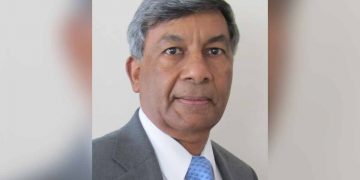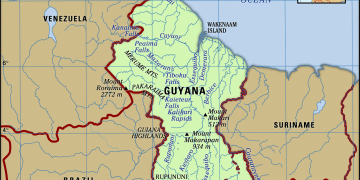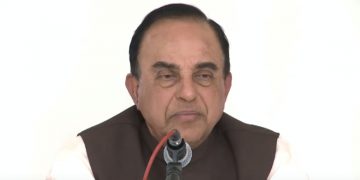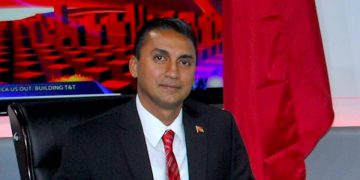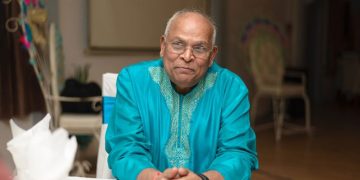There were several recent exchanges (benefits or advantages and disadvantages) on whether Guyanese teachers should accept teaching positions in America. The benefits far outweigh sacrifices or concerns expressed in missives as I and all other West Indian teachers experienced in the classroom in New York; there may be few exceptions. The pay is between five to ten times that in the Caribbean. And the other perks and benefits dwarfs those in Guyana. Teachers families are also beneficiaries in health care and social security benefits.
The challenge Guyanese teachers may face is licensing as a teacher. Will it be waived? Or will they be given time to become licensed as happened previously? Only licensed teachers are allowed as regular educators in the classroom and to move up in the annual pay scale. I was among a rare group with multiple licenses — Math, Social Sciences, Chemistry and General Sciences. And I declined to apply for the license to teach English Language and Literature although I taught both as well as other subjects for several years.
The licensing requirements have changed since I entered into the classroom in 1984 after a part time stint as a tutor in university. At that time, there was a national teachers exam of difficult six half an hour tests that tested would be educators on a variety of subjects and in writing English. Potential teachers were allowed to repeatedly take those parts of the test they failed until they pass. Teachers who did not pass were granted temporary status as educators until they pass with their salary frozen at a low step; there was a maximum three year period to pass the test after starting teaching. If a teacher did not meet the requirement within five years, the teacher is suspended from teaching until he or she meets the minimum requirement. I and Baytoram Ramharack passed NTE in the first sitting. Many would be teachers, including several Guyanese, failed. Asians had the highest pass rate and in other licensing fields as well. The failure rate among minorities was very high. Minorities complained that the test was racially biased. The exam was changed resulting in higher pass rates among minorities. I am not certain there are still comprehensive tests as the requirements for licensing keep changing.
Besides licensing, teachers were required to have a minimum MA degree. Some educators pursued two Masters which earned teachers an extra $3000 on top of the standard salary. Ramharack and I had multiple degrees and doctorate which placed us at the highest salary bracket. The pay scale is approximately $10K monthly and keeps climbing depending on experience. Teachers also earn extra for filling in for absentee teachers — one or even two periods a day for approximately $42 a period. And if hired outside of the work hours for tutoring or other activities, one is paid by the hour of approximately $50 an hour. Teachers are offered incentives for accepting a job.
Teachers are observed by the principal or Assistant Principal in the classroom at least three times a term and are rated on a scale. During my time, the rating was satisfactory or unsatisfactory. If a teacher was rated unsatisfactory two consecutive years, he or she is brought up on charges of incompetence before review board that can terminate the license as well as employment.
In some schools, teachers, including Guyanese, were or are harassed. But if they are good teachers demonstrating competence and interest in the students, they are hardly harassed and pushed out of the job as I discovered while being the head of the union at my chapter.
Aside from salary, the benefits are enormous — full medical and dental coverage, including for families, vacations including for the Christmas, Easter, Winter, and summer breaks. There are just about 180 school days within the school year starting the first Tuesday in September and ending the last Thursday in June. In between are several days off marking festivals (including Diwali and Eid) and commemoration. Educators also get one sick day a month that can be accrued and aggregated and used anytime. If unused, educators get paid for half the sick days at about $600 a day at time of retirement. It is a bounty for those who didn’t use all their sick days.
There is also pension benefits. An educator gets 2% in pension benefits for each year taught. If one teaches 30 years, one gets 60% of average of maximum salary after retirement. And more pension if one works additional years. One is also entitled to federal social security that could work out to $3000 monthly if one puts in 30 years.
And while on the job, teachers can set aside a portion of their salary of up to 23% into a retirement fund that earns at least 7%. There are two retirement funds to which one can make contributions for future use. That portion is reduced from the annual income resulting in lower tax rate and higher savings for future use. Some teachers saved over $1M at retirement. Overseas recruited teachers are eligible for green card and citizenship.
So the benefits are plenty in serving as an educator in New York. Benefits are similar in other counties and states though salary may be lower in North Carolina and a few other states.
It is to Guyana’s loss if local teachers are attracted to better pay packages and conditions elsewhere. Government must increase salary and offer other incentives to retain teachers.
Yours truly,
Vishnu Bisram















